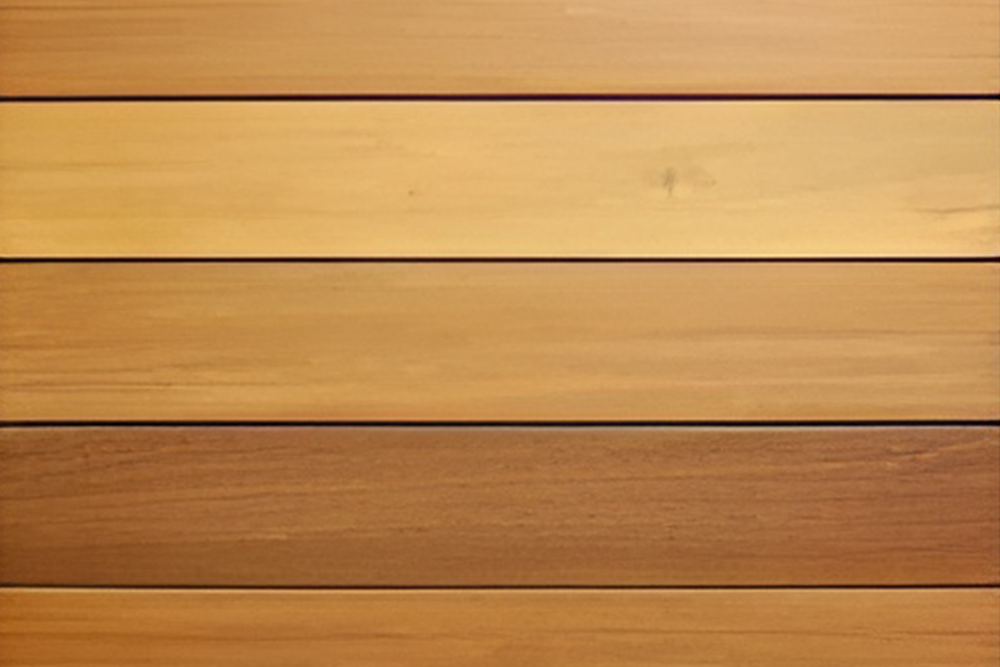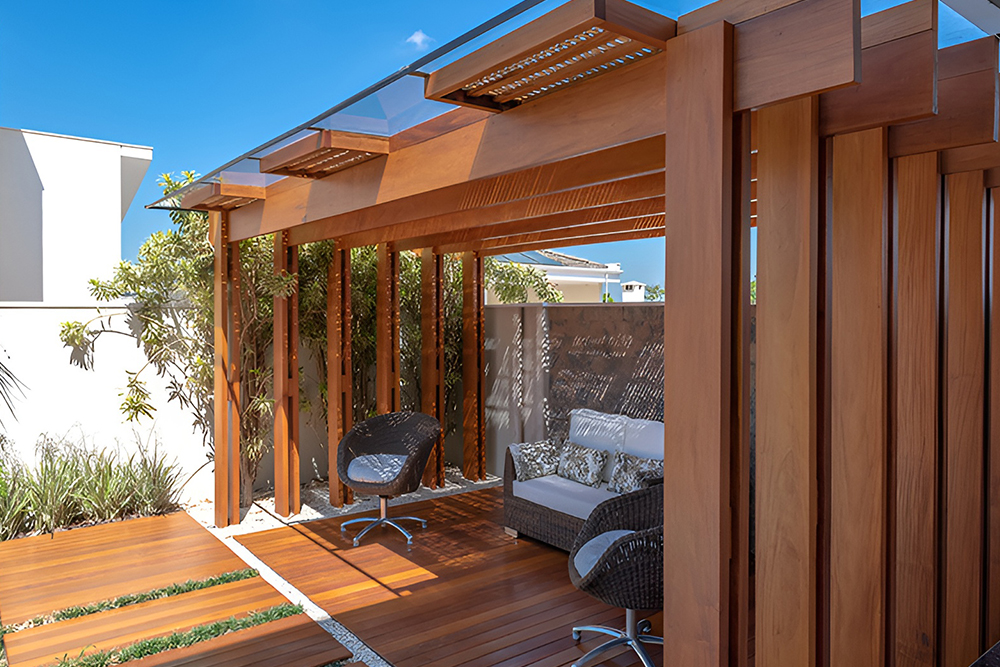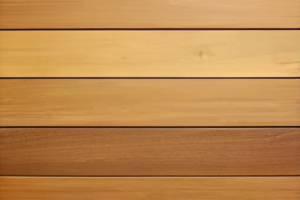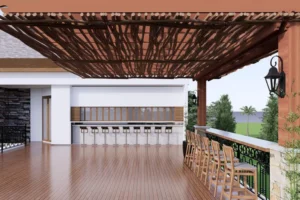
Decking installation
Handling and Storage of Tropical Pro Hardwood Before Deck Installation
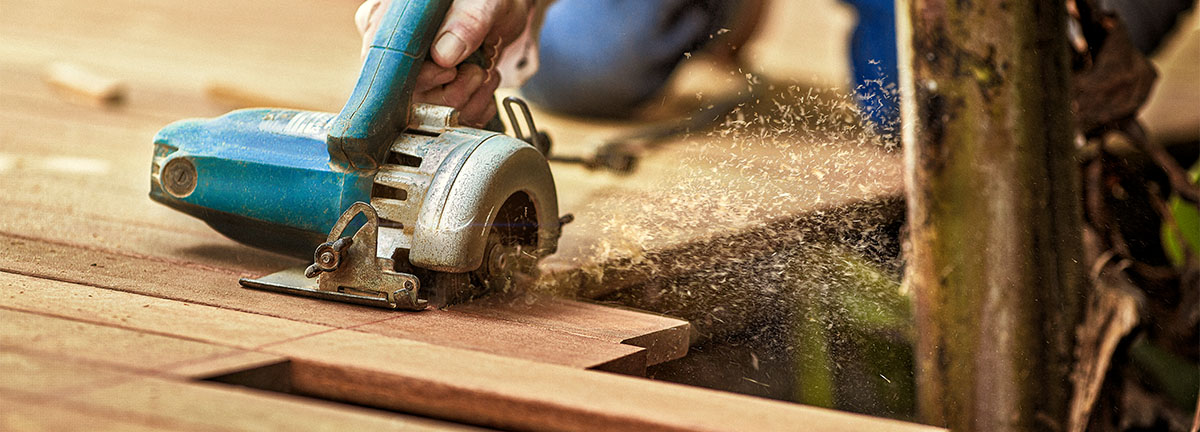
Tropical Pro decking is Kiln dried to between 12% and 14% moisture content for optimal outdoor performance. Tropical Pro boards should be stabilized and acclimated to the climate before installation.
Until installed, boards should be stored away from direct sunlight and should be kept dry. Boards should be kept on a level surface, preferably not kept directly on concrete or the ground. A plastic sheet, tarp, or another moisture barrier should be used.
Boards should be stacked evenly on bolsters, which allows airflow from underneath. If the boards will be stored outdoors, make sure to cover the top and sides. Sufficient ventilation is very important to keep cupping to a minimum and for preserving the long-term stability of the lumber.
Planning is crucial for the longevity of the boards and to prevent the build-up of humid air under the wood, which will permeate into the boards. Correctly planned airflow channels will allow air to flow from under the deck, between the joists, and through the gaps between the boards.
The design of the deck also needs to enable cross ventilation to minimize the chances of cupping and surface checking of the boards. This will reduce the natural tendency of wood to move throughout use. We suggest at least 18” of open air under the joists and open side for sufficient airflow.
If skirting is installed, it must be ensured it does not hinder sufficient cross ventilation. The ground should be sloped sufficiently to prevent water from standing under the deck, which is why installing a deck above a concrete pad is not recommended.*
*Concrete raises the risk of water retention, and boards will tend to cup and crown.
Installation Guidelines
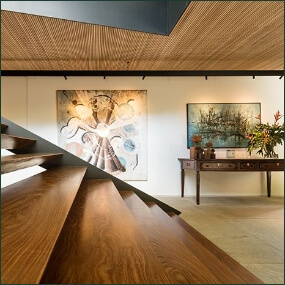
Add Your Heading Text HereEnsure your project complies with all local building codes, and consult with a structural engineer for load-bearing and commercial applications.
For joists and concealed structural parts, cedar, metal, or pressure-treated wood may be preferred. Joist heads can be protected by a membrane to make the structure last longer.
Tropical Pro decking gets its long-lasting durability from naturally occurring alkali. Take care while working with it as the fine yellow dust that is produced during moist operations can cause dermatitis. Prolonged inhalation of sawdust should also be avoided.
Due to the high density of the wood, pre-drilling and countersinking are suggested before screwing and nailing. Carbide saw blades and quality drill bits are also recommended.
Make sure to wear eye protection and wash up properly after handling the wood.
Make Sure You Use High-Quality Stainless Steel Screws
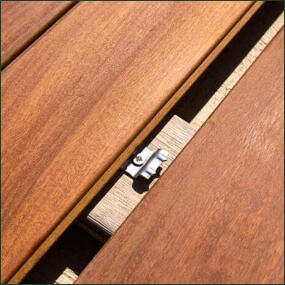
Non-stainless steel, iron, galvanized and coated products can cause black staining and generally have a shorter life than Ipe wood itself. Proper fastener length is usually the thickness of the wood multiplied by approximately 2.5. Also, use two screws per joist to attach the decking.
A minimum 3/32” gap between Tropical Pro decking boards is recommended to ensure adequate airflow and drainage. End-to-end butt joints will be installed without a gap, but once the wood is settled, shrinking of approximately 1/8” on 6” boards is expected. In hot and dry climates, expect additional shrinkage. If that’s the case, kiln-dried lumber and an appropriate fastener must be considered.
Alternative screw and plug: Pre-drill and counterbore decking board up to 1/4″; drive in the screw and lightly tap and glue a 3/8” diameter plug in every hole with marine-grade epoxy. Sand for a flush finish.
Finishing

Non-stainless steel, iron, galvanized and coated products can cause black staining and generally have a shorter life than Ipe wood itself. Proper fastener length is usually the thickness of the wood multiplied by approximately 2.5. Also, use two screws per joist to attach the decking.
A minimum 3/32” gap between Tropical Pro decking boards is recommended to ensure adequate airflow and drainage. End-to-end butt joints will be installed without a gap, but once the wood is settled, shrinking of approximately 1/8” on 6” boards is expected. In hot and dry climates, expect additional shrinkage. If that’s the case, kiln-dried lumber and an appropriate fastener must be considered.
Alternative screw and plug: Pre-drill and counterbore decking board up to 1/4″; drive in the screw and lightly tap and glue a 3/8” diameter plug in every hole with marine-grade epoxy. Sand for a flush finish.

Receive The Latest News
Subscribe To Our Weekly Newsletter

- OUR LOCATIONS
- CONTACT US
- SIGN UP
Stay informed about the latest offers, products and sales
- FIND US
- CONTACT US
- SIGN UP

